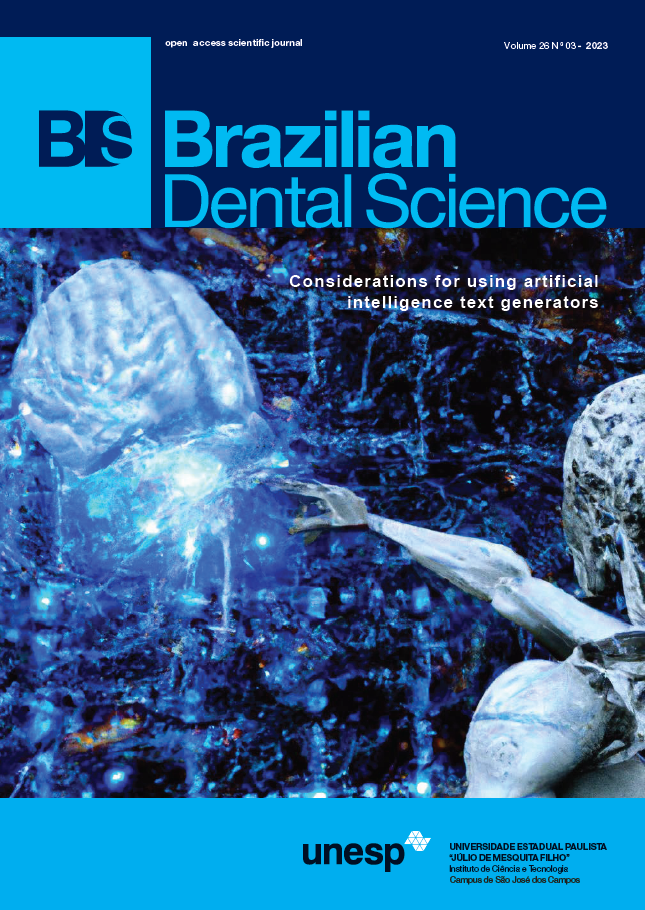Evaluating the efficacy of Etoricoxib in reducing post-operative pain associated with minor oral surgery. A randomized clinical trial
DOI:
https://doi.org/10.4322/bds.2023.e3854Abstract
Etoricoxib, a new cyclooxygenase-2-selective inhibitor has demonstrated a rapid onset analgesic effect for relieving acute pain especially when prescribed as a pre-emptive medication. On these bases, this study may provide useful information and guidance for clinicians working in the field of oral surgery, as regards handling odontogenic pain and postoperative pain precisely with cyclooxygenase-2 inhibitors. Objective: the study aimed to measure the quantifiable efficacy of Etoricoxib in reducing post-extraction pain in subjects undergoing minor oral surgical intervention as compared to Naproxen (a traditional NSAID) which is commonly used to control postoperative pain. Material and Methods: a 120 mg film-coated tablet of Etoricoxib was given to each of the twenty patients representing the study group, and a 500 mg tablet of Naproxen was given to each of the other twenty subjects representing the positive control group. According to manufacturer instructions, the tablets were given to the subjects 30 minutes pre-operatively (before dental extraction). Post-operative pain was assessed for each subject using eleven points from zero to ten, visual analog scale. Results: showed no statistically significant difference between Etoricoxib and Naproxen in decreasing post-extraction odontogenic pain, suggesting that Etoricoxib is as efficient as Naproxen in the control of discomfort with dental origin taking into consideration the patient’s status when prescribing the medication. Conclusion: this study suggests that Etoricoxib can be handled as a pre-emptive medication to reduce post-operative pain for subjects seeking traditional or surgical extraction of any of their teeth.
KEYWORDS
Etoricoxib; Pain; Oral surgery; Clinical Trial
Downloads
Published
How to Cite
Issue
Section
License
Brazilian Dental Science uses the Creative Commons (CC-BY 4.0) license, thus preserving the integrity of articles in an open access environment. The journal allows the author to retain publishing rights without restrictions.
=================




























